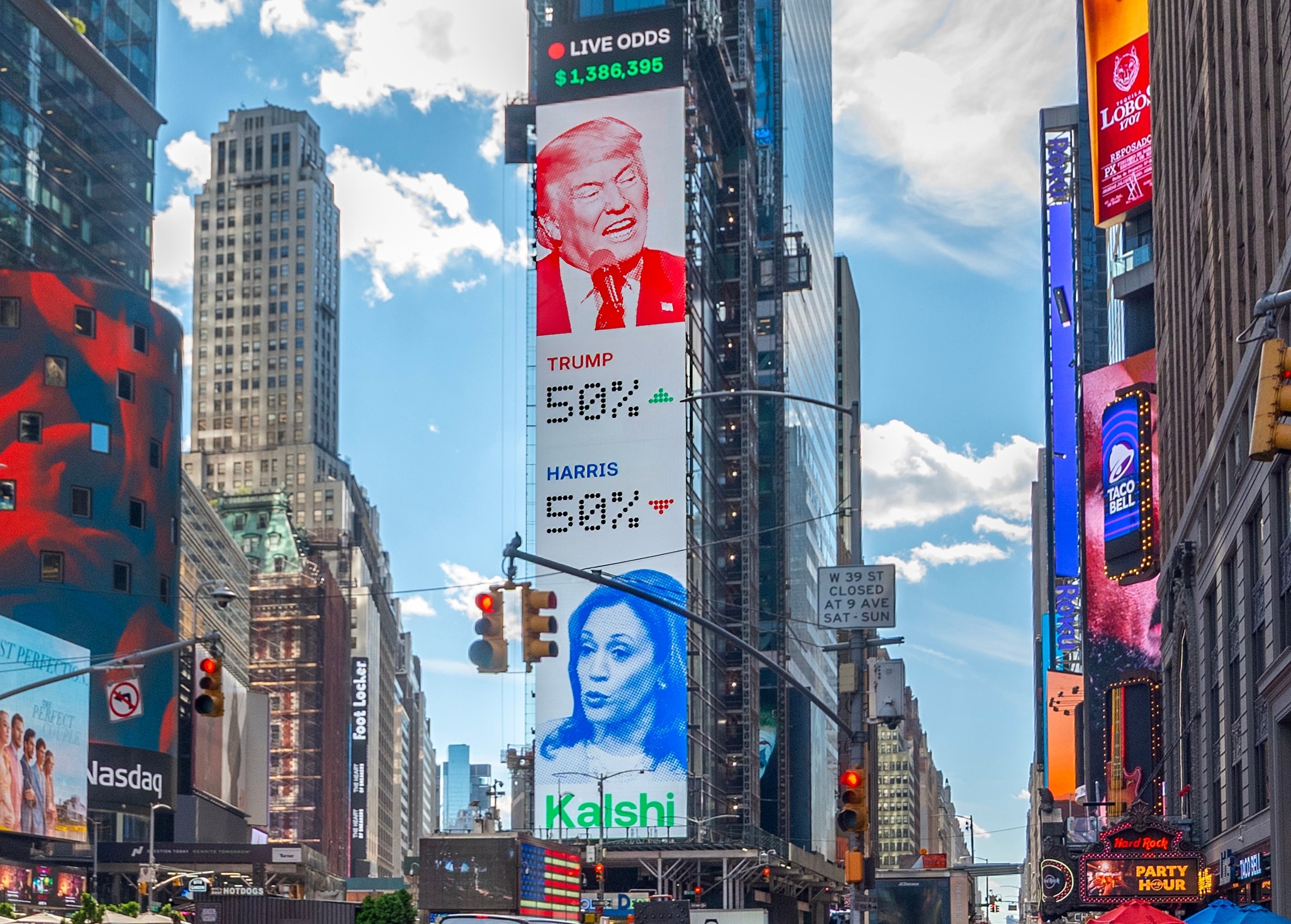Just how accurate are the latest Trump and Harris polls?
We rely on polls and surveys to predict election outcomes because we have no other alternative, writes Chris Blackhurst. The trouble is – they are, in reality, an educated guess


When Donald Trump left office, the polling organisation, Gallup, reported that he had a 38 per cent job approval rating – an abysmally low number.
A few weeks ago, NBC asked the same question and the answer had leapt to a far more creditable 48 per cent. That’s how fickle public opinion can be, how it can change.
People thought a Joe Biden presidency would provide all the qualities that Trump’s didn’t, like consistency and solidity. When that failed to materialise because of his frailty, they were seemingly reminded of the energy of Trump. All his negative aspects – dark conspiracy theories, his lashing out, a revolving door at the White House, repeated blatant deception, breaking the law – were forgotten. Suddenly, Trump was being remembered fondly by more Americans.
If it was left to reason, Trump would be nowhere in this election. He carries too much negative baggage. But just as Trump defies gravity when it comes to his favourability rating and is able to rewrite history, so logic does not determine the outcome of the presidential election. Instead, it’s dependent on all manner of factors.
Charged with trying to make sense of it all are the polling firms. This year’s contest, they’re saying, is too close to call. It’s been that sort of fight all along, where forecasting is concerned, of nip and tuck – one side slightly up one minute then down the next.
The latest simulation from FiveThirtyEight National Polls tracker (the poll of polls) gives a Trump victory 53 times out of 100 and Harris, 46 out of 100. It’s that tight.
But then that calculation did not include the local poll in Iowa, which put Harris three points ahead. The Iowa finding, made yesterday, threw a grenade into the sums, as it’s not a swing state but a safe Republican state – and therefore, it was assumed, locked in for Trump. But apparently not, if that survey is correct and with the justification that many women, dissuaded by Trump’s support of the anti-abortion law, are moving to Harris.
The truth is that no one knows. Even Nate Silver – the doyen of pollsters – is no longer so sure. Last week, he was going for Trump, today he is sensing a late Harris surge.
What appears to be happening is that everybody is assuming it will be close, based on the last two presidential elections where the result was determined by 78,000 and 44,000 votes respectively.
But each of the seven critical battleground states is showing wriggle room or enough space for typical polling error, traditionally put at three per cent. It’s possible that each one will switch the other way come the count, and there’s also a chance of all seven heading in one direction, so the election turns out to be not close at all.
It result could be even more marked, as studies suggest that widely-accepted textbook three per cent may be too low. The real margin of error could be more than twice that, at seven per cent, according to one analysis that compared how people said they would vote with what really occurred.
Yet, despite their inaccuracy, the polls are dominating the news coverage – and not just the news: Wall Street and City investment funds have been conducting their own private polling on which to base their strategies.
Why have we become so reliant upon them? Because they are all there is. There is no other way of estimating what will transpire – not one that will stand up to any semblance of scientific scrutiny anyway.
For polling companies, establishing a reputation for accuracy is their lifeblood. Elections are only a small part of what they do, albeit the bit that receives the most attention. Their day-to-day activity is quizzing consumers on their tastes and views on behalf of fee-paying clients. It’s a major industry, one that is seeing newcomers arrive all the time as technological advances reduce the cost of surveying.
The pressure in 2024 is heightened because in the last two presidential elections they underestimated the support for Trump. They’re desperate to get it right this time.
Easier said than done, however.
In the past, voter forecasting was more reliable because households had registered landlines and people answered the phone. Today, we ignore random, unrecognised calls or text messages, in part because we’re fearful they might be scammers. This produces a mind-bogglingly low response rate. One of the best-regarded, the New York Times/Siena poll has a response rate of just 1 per cent.
What that means as well is that those who do answer and say what they’re intending are in a definite minority, they’re the odd ones out. No one has any idea about who the majority are supporting.
The pollsters get around this mismatch by weighting the responses, using variables like age, gender and race to relate to the wider public. In theory, it enables them to extrapolate from a small sample how the populace will vote.
Some polls this year have used as many as 12 variables. What they’re masking is that when all is said and done, the estimate is little more than an educated guess.
Thankfully, the clock is ticking. There is only one day left before we know. Right now, just one thing is certain: either Harris or Trump will be the next president.






Join our commenting forum
Join thought-provoking conversations, follow other Independent readers and see their replies
Comments